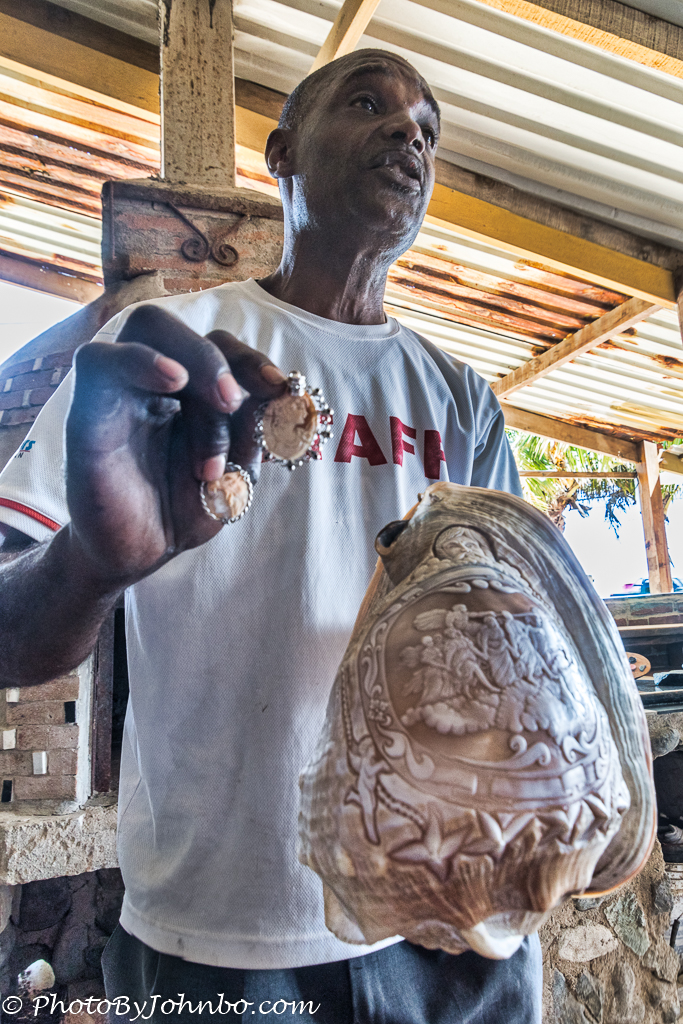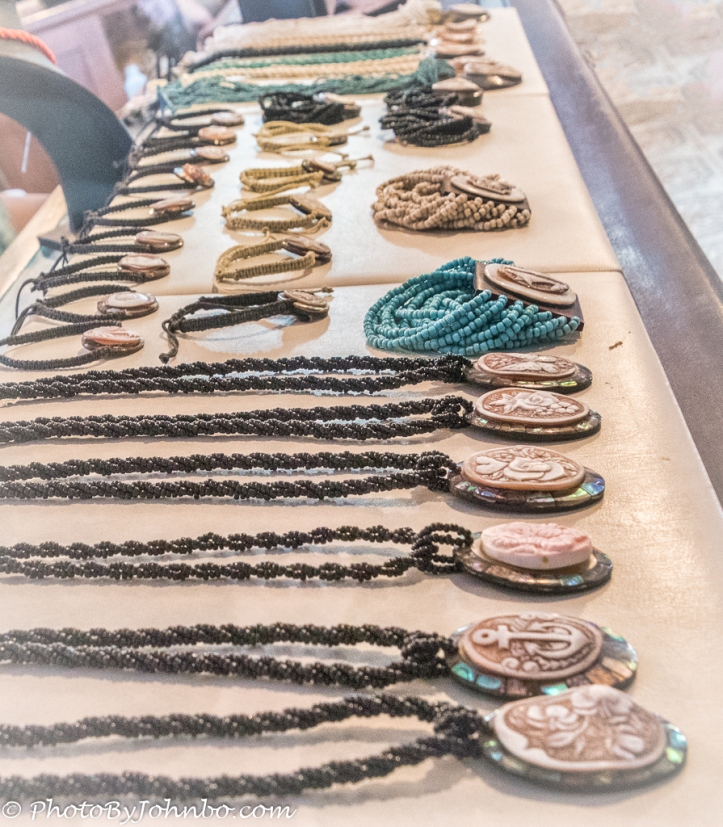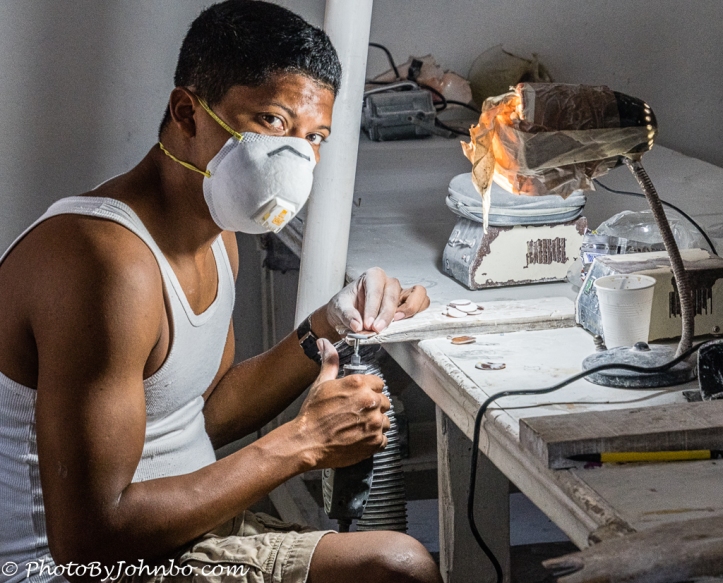The craftsman in the opening image isn’t wearing a mask because of the pandemic. He’s an artist working to create cameo designs. I’ve always thought of cameos as small sculpted medallions worn around the neck. What I learned at this cameo shop was to change my notion completely. Let’s start with Marriam-Webster’s definition:
cameo (noun)
1a: a gem carved in relief (see relief entry 1 sense 6) especially: a small piece of sculpture on a stone or shell cut in relief in one layer with another contrasting layer serving as background
b: a small medallion (see medallion sense 2) with a profiled head in relief
2: a carving or sculpture made in the manner of a cameo
Of course, the other listed definitions relate to the appearance of a well-known celebrity appearing briefly only once in a theatrical, motion picture, or television performance. We will ignore this part of the definition for the duration of this post.
 I learned here that cameo refers to any sculpture carved into the face of a natural material, and they are not limited to the smaller sizes I’d known about, nor were they limited to profile faces of historic women. Of course, this stop on our cruise tour was an enticement to purchase as well as a learning experience (aren’t they all?) Our tour bus emptied into a small, shaded outdoor area with bench seats where we were introduced to a representative of the shop who gave us a bit of history of cameo art.
I learned here that cameo refers to any sculpture carved into the face of a natural material, and they are not limited to the smaller sizes I’d known about, nor were they limited to profile faces of historic women. Of course, this stop on our cruise tour was an enticement to purchase as well as a learning experience (aren’t they all?) Our tour bus emptied into a small, shaded outdoor area with bench seats where we were introduced to a representative of the shop who gave us a bit of history of cameo art.
 Of course, I saw plenty of those silver dollar sized cameos, (many without the iconic profile heads) for sale, but I was surprised to see the cameo sculptures on larger shells. I “learned” that molded plastic “cameos” are fake. Make a mold and produce. No, of course, we need the real thing. Don’t waste your money, buy the genuine article from us.
Of course, I saw plenty of those silver dollar sized cameos, (many without the iconic profile heads) for sale, but I was surprised to see the cameo sculptures on larger shells. I “learned” that molded plastic “cameos” are fake. Make a mold and produce. No, of course, we need the real thing. Don’t waste your money, buy the genuine article from us.
 The most impressive (and most expensive) were designs on large conch shells. There were plenty of examples to choose from (for the right price.).
The most impressive (and most expensive) were designs on large conch shells. There were plenty of examples to choose from (for the right price.).
 We were allowed views of an artisan working on those hand-sculpted cameos. As you can see by the image above, he is using an electric Dremel tool. Even this ancient art (dated to pre-Christian times in Egypt), has morphed into the modern technology of electric carving tools and N-95 masks to protect the artist’s lungs from the small dust particles.
We were allowed views of an artisan working on those hand-sculpted cameos. As you can see by the image above, he is using an electric Dremel tool. Even this ancient art (dated to pre-Christian times in Egypt), has morphed into the modern technology of electric carving tools and N-95 masks to protect the artist’s lungs from the small dust particles.
 There is no doubt that the art is beautiful and sculpting in relief on a relatively thin material is a specific skill. I was to come to appreciate the art for its simplicity and the high degree of technical skills required to give a relatively flat surface a 3-D relief. Not being a collector of such curios, I admired the wares for sale and happily boarded the bus bound for the next stop on our tour.
There is no doubt that the art is beautiful and sculpting in relief on a relatively thin material is a specific skill. I was to come to appreciate the art for its simplicity and the high degree of technical skills required to give a relatively flat surface a 3-D relief. Not being a collector of such curios, I admired the wares for sale and happily boarded the bus bound for the next stop on our tour.
John Steiner


It must be so tricky to get such intricate designs onto a shell!
That artisan worked closely with that engraving tool. I would have liked to see the details he was working on. No doubt it was intricate.
Such fine and amazing work.
Indeed. Truly artisan quality.